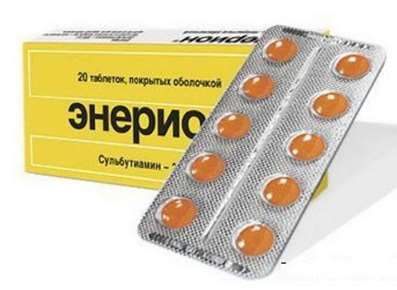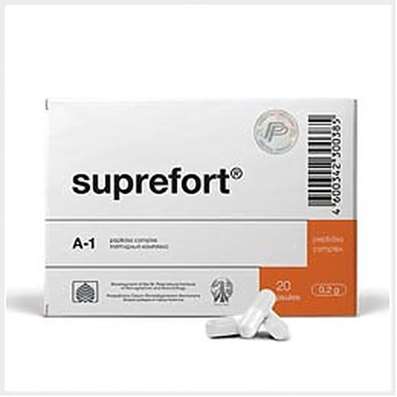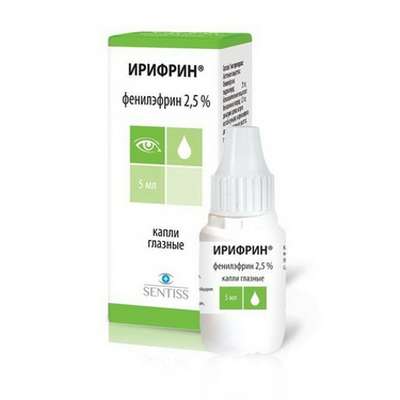Instruction for use: Urokinase
I want this, give me price
Trade name of the drug – Ukidan, Urokinase medac
The Latin name of the substance Urokinase
Urokinasum (genus. Urokinasi)
Gross formula
C1376H2145N383O406S18
Pharmacological group:
Fibrinolytics
The nosological classification (ICD-10)
H34 Vascular occlusion of retina: Arterial thrombosis of the vessels of the eye; Venous thrombosis of the vessels of the eye; Violation of retinal circulation; Disturbances of intraocular circulation; Insufficient blood supply to the mesh and choroid; Occlusion of central retinal vessels; Acute obstruction of retinal arteries; Subacute and chronic circulatory insufficiency in the retina or in the choroid of the eye; Vascular diseases of the retina; Vascular disorders in the retina of the eye; Vascular thrombosis of the retina; Central retinal vein thrombosis; Thrombosis of the central vein of the retina and its branches; Thrombosis of the central vein of the retina of the eye and its branches
I20.0 Unstable angina: heberden disease; Angina pectoris; The attack of angina pectoris; recurrent angina; Spontaneous angina; Stable angina pectoris; Angina rest; Angina progressing; Angina mixed; Angina spontaneous; stable angina; Chronic stable angina; Angina Syndrome X
I21 Acute myocardial infarction: Myocardial infarction in the acute phase; Acute Myocardial Infarction; Myocardial infarction with pathologic Q wave and without; Myocardial infarction complicated by cardiogenic shock; Infarction left ventricular; Transmural myocardial infarction; Myocardial infarction netransmuralny (subendocardial); Netransmuralny myocardial infarction; Subendocardial myocardial infarction; The acute phase of myocardial infarction; Acute myocardial infarction;Sub-acute phase of myocardial infarction; Subacute phase of myocardial infarction; Thrombosis of the coronary arteries (the arteries); Threatened myocardial infarction; Myocardial infarction without Q wave
I26 Pulmonary embolism: Recurrent thromboembolism of the pulmonary artery; Recurrent pulmonary embolism; Thromboembolism of the branches of the pulmonary artery; Thromboembolism of the lungs; Thromboembolism of the pulmonary artery (PE); Thrombosis of the pulmonary artery; Thromboembolism; Thromboembolism of the pulmonary artery; Thromboembolism; Pulmonary embolism; Thromboembolism of the pulmonary artery and its branches; Thromboembolism of pulmonary vessels; Embolism of the lung; Embolism of the pulmonary artery; Acute massive thromboembolism of the pulmonary artery
I27 Other forms of cardiopulmonary diseases: Chronic pulmonary heart disease; Hypertension pulmonary circulation; Pulmonary hypertension; Pulmonary heart disease; pulmonary heart disease; Cardio-pulmonary insufficiency; Secondary pulmonary hypertension; Chronic pulmonary heart; Eisenmenger syndrome
I70.2 Atherosclerosis of arteries: arteriosclerosis obliterans; Arteriosclerosis peripheral arteries; Atherosclerosis of the arteries of the lower extremities; Atherosclerosis of peripheral arteries; Atherosclerosis limbs; Occlusive disease of the lower extremities; arteriosclerosis obliterans; Arteriosclerosis obliterans of lower limb arteries; Atherosclerosis obliterans of the upper limbs; Arteriosclerosis obliterans of lower extremities; Atherosclerosis of arteries; limb arteriopathy; Arteriosclerosis obliterans limbs; arteriosclerosis obliterans
I74 Embolism and arterial thrombosis: Thrombosis of effort (stress); Arterial thrombosis; Arteriothrombosis; Subacute and chronic arterial thrombosis; Subacute thrombosis of peripheral arteries; Postoperative thrombosis; Vascular thrombosis; Vascular embolism; Thrombosis of aortocoronary shunt; Arterial thrombosis; Thrombosis of arteries; Coronary artery thrombosis; Coronary thrombosis; Thrombosis of blood vessels; Thrombosis with ischemic stroke; Thrombosis with general surgical operations; Thrombosis in Oncology Operations; Vascular thrombosis; Thrombus formation in the postoperative period; Thrombotic complications; Thromboembolic diseases; Thromboembolic syndrome; Thromboembolic complication in the postoperative period; Thromboembolism of arteries; Partial vascular thrombosis; Embolism; Embolism of arteries
I82 Embolism and thrombosis of other veins: Recurrent venous thrombosis; Postoperative thrombosis; Venous thrombosis; Acute venous thromboembolism; Recurrent vein thrombosis; Venous thrombosis; Thrombosis of veins of internal organs; Venous thrombosis; Deep vein thrombosis; Thrombosis of blood vessels; Vascular thrombosis; Thrombosis of veins; Deep vein thrombosis; Thromboembolic diseases; Thromboembolism of veins; Severe venous thrombosis; Embolism; Embolism of veins; Thromboembolic complications
R07.2 Pain in the heart: neuroses of the heart; Myocardial ischemic pain; Pain syndrome in myocardial infarction; cardialgia; cardioneurosis; Cardiac syndrome; Pain in cardiac patients; Cardialgia on background dyshormonal myocardial dystrophy; Functional cardialgia; Psevdostenokardiya; pericardial pain
CAS Code
9039-53-6
Characteristics of the substance Urokinase
The enzyme is a plasminogen activator derived from human kidney cell cultures.
Pharmacology
Mode action - Fibrinolytic.
Activates glu- and lizplazminogens, turns them into plasmin, which causes enzymatic destruction of fibrin. Disintegration of the fibrin network leads to the disintegration of the constituent elements of the thrombus and its splitting into small fragments that are carried away by the blood current or dissolved in place by plasmin. The late decay products of fibrinogen (PDF D and PDF E) have a direct inotropic effect on the myocardium.
Causes lysis of the thrombus from the outside and from the inside. Increases contractility and improves myocardial perfusion. The formed degradation products of fibrinogen contribute to hypocoagulation, block the aggregation of erythrocytes and platelets, reduce the viscosity of the blood. After parenteral administration, hypocoagulation shifts are observed after 3-6 hours. Efficacy is increased by repeated administration in combination with small doses of heparin. Before the therapy for the selection of effective doses, it is necessary to determine the activity of plasminogen and antithrombin III, thrombin time and fibrinogen content in the blood. In case of depletion of plasminogen in the blood (severe stenosing atherosclerosis, recurrent thromboembolism, myocardial infarction, obesity, hyperlipidemia), it is recommended to administer large doses of the drug with a long course and combination with fresh plasma and plasminogen preparations. During pregnancy, therapy may prove ineffective due to the presence in the blood of a high level of natural urokinase inhibitors.
After intravenous administration, it binds to proteins and is inactivated by proteases (alpha2-macroglobulin, alpha1-antitrypsin, alpha2-antiplasmin, antithrombin III). Small fragments of these complexes are excreted in urine - up to 30-60 mg / day. T1 / 2 does not exceed 20 minutes. With a decrease in kidney function, excretion decreases significantly.
Application of the substance Urokinase
Acute arterial and venous thrombosis, thromboembolism of the branches of the pulmonary artery, acute myocardial infarction in the first 3-6 hours, unstable angina, thrombosis of the arteriovenous shunt, obliterating atherosclerosis of the vessels of the lower and upper extremities, primary hypertension of the small circulation.
Contraindications
Hypersensitivity, bleeding (ongoing or recently stopped), incl. In the first 72 hours after surgery (especially neurosurgical), with recent biopsy and arterial puncture (within 10 days), 10 days after birth; Ulcer or gastric cancer, cerebral thrombosis (including history), severe arterial hypertension, intracranial trauma, brain tumors, blood clotting disorders (especially with severe renal or hepatic insufficiency), bleeding swelling, acute pulmonary edema, diabetic hemorrhagic Retinopathy, vertebral or carotid artery thrombosis, bacterial endocarditis (subacute), atrial fibrillation, mitral stenosis, I trimester of pregnancy.
Restrictions
Active form of tuberculosis, chronic renal or severe hepatocellular insufficiency, elderly age (after 70 years).
Application of pregnancy and breastfeeding
The action category for fetus by FDA is B.
Side effects of the substance Urokinase
Hemorrhages in the areas of perfusion (especially with a duration of more than 48 hours), bleeding (from the gums, intestinal); Rarely - purpura, embolia fragments of lysis primary thrombus, fever, moderate decrease in hematocrit.
Interaction
Increase the likelihood of bleeding drugs that affect blood clotting (heparin), the function of platelets (including dipyridamole, indomethacin, phenylbutazone, sulfinpyrazone), leading to the development of ulceration and bleeding from the gastrointestinal tract. Indirect anticoagulants and acetylsalicylic acid increase the risk of developing spontaneous bleeding to the mediastinum. The effect reduces inhibitors of fibrinolysis (including aminocaproic acid).
Routes of administration
IV, intracoronary, locally (endocular, endopleural, endocoronary).
Precautions for the substance Urokinase
Use with caution during the first 18 weeks of pregnancy (placental abruption is possible), in the case of exfoliating aneurysm, a recent cardiopulmonary resuscitation with suspected damage to the internal organs. It should avoid the introduction of dextran to restore the volume of circulating blood because of the possible disaggregation of platelets. It is not recommended to mix in one syringe or in one solution for intravenous administration with other drugs.
Special instructions
Treatment is carried out under a thorough clinical (hemorrhagic syndrome, hematuria, etc.) and laboratory (every 4-6 hours) control. The level of fibrinogen in the blood should not fall below 100 mg%. After discontinuation of therapy, it is necessary to inject intravenous heparin-5000-10000 units every 12 hours under the control of thrombin and thromboplastin time. When developing internal and massive external bleeding, it is recommended to stop the drug administration. To stop bleeding (in emergency cases) use aminocaproic acid, human fibrinogen, transfusion of fresh blood.

 Cart
Cart





